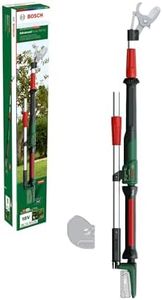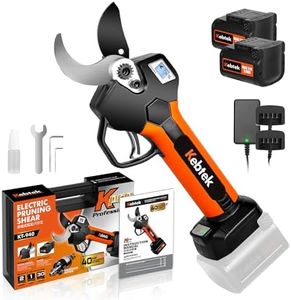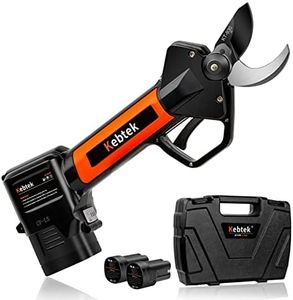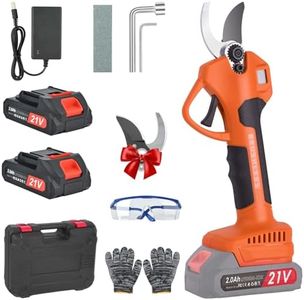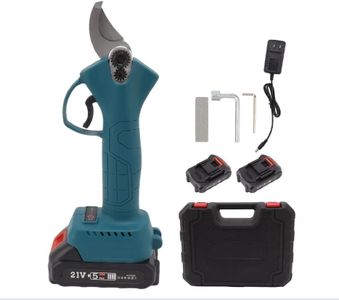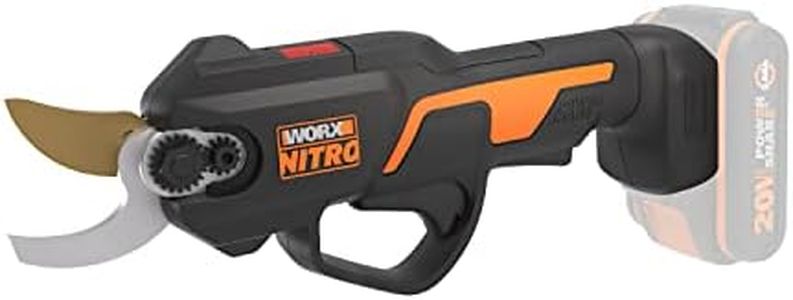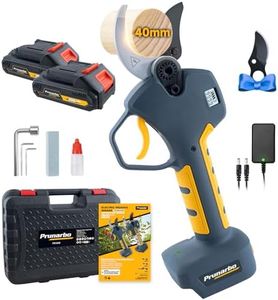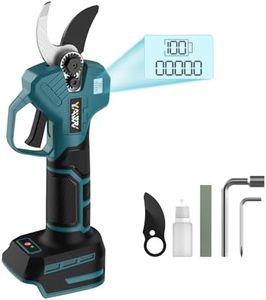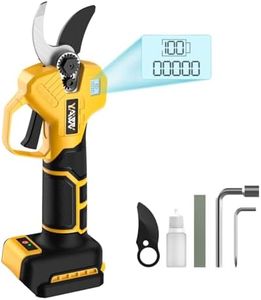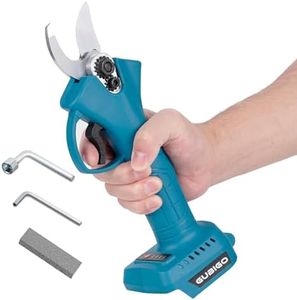We Use CookiesWe use cookies to enhance the security, performance,
functionality and for analytical and promotional activities. By continuing to browse this site you
are agreeing to our privacy policy
10 Best Cordless Pruning Shears
From leading brands and best sellers available on the web.By clicking on a link to a third party's website, log data is shared with that third party.
Buying Guide for the Best Cordless Pruning Shears
When shopping for cordless pruning shears, it's important to consider how and where you'll be using them. Think about the type of plants you'll be cutting, how often you'll use the shears, and whether you need them for light gardening or heavier, more frequent pruning. Picking the right features will help make your gardening tasks easier and more comfortable, while also ensuring durability and efficiency.Blade MaterialBlade material determines how sharp and durable your pruning shears will be. Common options include stainless steel, carbon steel, and coated blades. Stainless steel blades resist rust and are easy to maintain, making them good for general and light tasks. Carbon steel blades are sharper and tougher but may rust if not cared for properly, and are ideal for tougher branches and more frequent use. Some blades are coated for extra rust resistance. When choosing, think about how often you’ll use the shears and what type of branches you'll be cutting; for everyday gardening, stainless is usually fine, but for heavy or professional use, carbon steel might be best.
Cutting CapacityCutting capacity refers to the maximum thickness of branch that the shears can cut, usually given in millimeters or inches. Lower capacities (up to about 0.5 inches or 12mm) are best for light pruning work—flowers, small shrubs, and thin branches. Medium capacities (up to about 1 inch or 25mm) suit most home garden needs, including roses and fruit trees. Higher capacities (over 1 inch or 25mm) are meant for heavy-duty pruning, woody branches, and more demanding gardening. To pick the right one, consider the size of the branches you'll regularly cut; overestimating can make the tool heavier and costlier, while underestimating could limit your work.
Battery LifeBattery life indicates how long the shears can operate on a single charge. Some batteries last for one or two hours of continuous use, while others can last several hours or cover hundreds to thousands of cuts. If you have a small garden or brief pruning sessions, a shorter battery life is fine. For larger gardens or extended work, look for longer-lasting batteries or systems with replaceable batteries. Keep in mind that battery life decreases with tougher, thicker branches and cold weather.
Weight and ErgonomicsThe weight of the shears affects how comfortable and easy they are to use, especially for longer periods. Lighter models are better if you have many plants or need to prune for extended sessions, while heavier models may feel sturdier but can cause fatigue. Ergonomics refers to how the shears fit in your hand, including handle shape and grip. Test how the handle feels and whether the trigger is easy to press. If you have smaller hands or joint issues, prioritize lighter weight and ergonomic handles.
Safety FeaturesCordless pruning shears often include safety features such as lock-off switches, blade covers, or automatic shut-off. These features help prevent accidental starts or injuries, especially important if you have children around or are new to power tools. Look for a model with safety features that suit your comfort level, especially if you plan to store the tool where it’s accessible to others.
Ease of MaintenanceHow easy it is to clean, oil, and replace the blades or battery affects how long your shears will last and perform well. Some models have tool-free blade changes or easy-access battery compartments, making upkeep simple. If you prefer low-maintenance tools, choose models that highlight easy care or include cleaning accessories.
